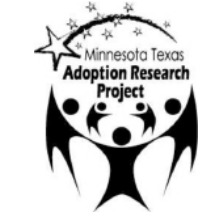 Wave 1:
Wave 1:
Adoptive families were interviewed in their homes across the United States in one session that lasted 3 - 4 hours. The session included separate interviews with each parent and with the target adopted child; administration of several questionnaires; and a joint couples interview with the adoptive parents. Birth mothers were interviewed in their home, at the agency, or by telephone. They also completed several questionnaires. Details about measures are provided in the "Measures" section and in the Method Summary documents available as downloads.
Wave 2:
At Wave 2, adoptive families were once again seen in their homes during a single session that typically lasted 4 - 5 hours. The session included individual interviews with each parent and the target adopted child, administration of several questionnaires, and administration of a family interaction task. Some family members were interviewed by telephone when it was impossible to gather everyone together for the home visit (e.g., living out of the U.S., adolescent away at college, etc.)
Wave 3:
At Wave 3, the adopted young adults completed their interviews and questionnaires online. Each participant was assigned a unique username and password to access a menu page housing consent and compensation forms, a link to the secure chat site (for the interview) and a set of 11 questionnaires. Interviewers arranged by phone and emails to meet participants in the secure online chat sites prior to the first interview. After consenting to participate in the study, participants followed a link to the chat site to complete a section of the interview. Most interviews took place in 2 to 3 sessions. After completing all interview sessions, participants began the questionnaires. Participants were given access to questionnaires in a specified order. A new questionnaire became available after the participant had finished the preceding one. The adoptive parents completed interviews over the telephone and questionnaires by paper. After agreeing on the phone to participate in the study they were mailed a consent form and two questionnaires. Once these forms were returned, a telephone interview was scheduled. Mothers and fathers each completed separate questionnaires and interviews. The young adult partners (YAP) completed their interviews and questionnaires online following the same procedures as the adopted young adults. YAPs completed one interview and three questionnaires. Most interviews took place in one session. Birth mothers were not interviewed at Wave 3.
Wave 4:
At Wave 4, the adopted young adults completed an online survey. Each participant was assigned a unique link by Qualtrics, online survey software, to access the consent form, instructions on how to navigate the survey, and the survey itself. After consenting to participate in the study, participants received an email in their preferred email account, which contained a link to the survey. The survey consisted of 11 Parts for those participants without children, and 13 Parts for those participants who indicated that they did have children. All participants were notified that the preferred timeframe for completing the survey (once they had started it) was one week. The majority of participants completed their surveys on the day they started. After completing the survey, participants were sent a thank you email, which also contained a reminder about compensation. If participants did not complete their surveys within the given timeframe of one week, they were sent reminder emails through the Qualtrics website. The young adults were compensated $50 for completion of the survey and entered into a drawing for an iPad. A few of the adopted young adults (n = 5) completed surveys in hardcopy paper format for reasons such as lack of internet access, discomfort communicating in an electronic format and lack of time.
Birth mothers were contacted via email and a hardcopy letter to gauge their interest in participating in the survey. If participants could not be found through either of these methods of contact, then their participating birth children, who were in current contact with their birth mothers, were asked to forward a study invitation to them. After consenting to participate in the study, participants received an email in their preferred email account, which contained a survey link. Each participant was assigned a unique link by Qualtrics, online survey software, to access the consent form, instructions on how to navigate the survey, and the survey itself.
After completing the survey, participants were sent a thank you email. If participants did not complete their surveys within the given timeframe of one week, they were sent reminder emails through the Qualtrics website. Thirty-six of the birth mothers completed the survey online, while 3 birth mothers completed surveys in hardcopy paper format for reasons such as lack of Internet access and lack of time to remain online. The birth mothers who indicated that they had identifying information about the child they placed for adoption and were either in direct contact with this adopted young adult or were following the adopted young adult through various forms of social media (such as Facebook) were invited to participate in a follow-up interview. Of the 39 birth mothers who completed a survey, 30 met the criteria for an invitation, and 26 birth mothers completed an interview.
